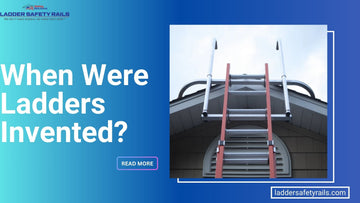
Painting can be a daunting task, especially when it involves reaching high places. Whether you're giving your walls a fresh coat of paint or touching up the ceiling, having the right ladder is essential for safety and efficiency. But with so many options available, it can be challenging to determine the best ladder for painting stairs and high ceilings.
In this guide, we'll explore the factors to consider when choosing ladders for painters and delve into the various types available to help you make an informed decision.
ladder for painting How to Choose the Best Ladder for Painting Stairs and High Ceilings
When trying to find the best ladders for painting projects, several factors should influence your decision:
-
Height Requirements:
Assess the height of the area you need to reach. Consider not only the immediate task at hand but also potential future projects that may require additional height.
-
Stability:
-
Portability:
If you anticipate moving the ladder frequently during your painting project, consider its weight and ease of transport. Lightweight, portable ladders are ideal for maneuvering around the room with ease.
-
Material:
Ladders are commonly made from aluminium, fiberglass, or wood. Each material has its advantages, with fiberglass being lightweight and non-conductive, aluminium being durable and lightweight, and wood offering a traditional aesthetic.
-
Weight Capacity:
Ensure the ladder can support your weight along with the weight of your painting supplies. Exceeding the weight capacity can compromise safety and stability.
-
Versatility:
Depending on the nature of your painting project, you may require a ladder with additional features such as adjustable heights, platform steps, or extension capabilities.

Different Types of Ladders for Stairs and High Ceilings
Now that you understand the crucial factors, let's explore the different types of ladders for painters:
Step Ladders (A-Frame Ladders):
- Ideal for: This is a good ladder for high ceiling (typically 3 to 10 feet) and for painting walls.
- Pros: Lightweight, compact, and stable due to their wide base. Often come with paint tray holders for convenience.
- Cons: Limited reach. Not suitable for long painting sessions due to the lack of a working platform.
Extension Ladders:
- Ideal for: Reaching high areas (up to 40 feet) like exterior walls, second-story ceilings, or roof overhangs.
- Pros: Most versatile ladder option, offering maximum reach. Can be adjusted to different heights.
- Cons: Requires a secure wall for leaning and might feel wobbly at full extension. Heavier than step ladders. It's generally recommended to have a spotter for safety.
Platform Ladders:
- Ideal for: Extended painting periods on walls, high ceiling, or other flat surfaces. Offers a comfortable working platform with ample space for tools and supplies.
- Pros: Provides excellent stability and comfort with a wide platform. Often has built-in tool trays for easy access.
- Cons: Bulkier and heavier than step ladders. Limited reach compared to extension ladders.
Multi-Position Ladders:
- Ideal for: Projects requiring multiple configurations for reaching different heights and angles. Can be used as a stepladder, straight ladder, scaffold, or trestle.
- Pros: Most versatile in terms of functionality. Offers a variety of configurations for various tasks.
- Cons: Can be heavier and more complex to adjust compared to other ladder types. Requires a bit more practice to set up safely.
Conclusion:
Choosing the right ladder for painting staircase and high ceilings goes beyond just height. Consider the project scope, work environment, and safety features to find the perfect match. Remember, Ladder safety is paramount. Never exceed the weight capacity of the ladder, always secure it properly, and avoid overextending yourself. If you're unsure about using a ladder for a particular height, consider alternative options like scaffolding or hiring a professional painter. With the appropriate ladder and a focus on safety, your painting project can be a smooth and successful experience.

FAQ:
- How to use ladder for high ceiling paintings?
Painting high ceilings on stairs can be challenging but manageable with the right approach. Start by securing the area around the stairs to prevent accidents. Use a sturdy extension ladder for high ceiling placed securely on level ground or invest in a ladder with adjustable legs to accommodate the slope of the stairs. Ensure the ladder is tall enough to reach the ceiling comfortably. Use an extension pole with a paint roller to apply paint to the ceiling, working in small sections to ensure thorough coverage.
- How to Paint High Stairwell Without a Ladder?
If you prefer not to use a ladder, there are alternative methods for painting a high stairwell. One option is to use a scaffolding system, which provides a stable platform for painting at various heights. Alternatively, you can use an extension pole with a paint roller or brush to reach high areas from the ground. Take precautions to secure the area and use appropriate safety equipment to prevent accidents.
- How to Paint High Ceilings in Stairwell with a Ladder?
When painting high ceilings in a stairwell, safety is paramount. Use a tall extension ladder with adjustable legs to accommodate the slope of the stairs. Place the ladder securely on level ground and extend it to reach the desired height. Work in small sections, starting from the top and gradually working your way down. Use an extension pole with a paint roller to apply paint to the ceiling, ensuring thorough coverage while maintaining stability on the ladder.
- What Size Ladder for Painting Houses?
The size of the ladder you need for painting houses depends on the height of the house and the areas you need to reach. For single-story homes, a standard step ladder or extension ladder should suffice. However, for two-story or taller houses, you may require a taller extension ladder to reach high walls and ceilings. Consider the maximum reach of the ladder, including your own height and arm's length, to ensure you can safely access all areas requiring painting.
Choosing the best ladder for painting staircase and high ceilings is essential for safety, efficiency, and quality results. Consider factors such as height requirements, stability, portability, and versatility when selecting a ladder for your next painting project. Whether you're painting walls, ceilings, or stairwells, there's a ladder available to suit your specific needs. By making an informed decision and following proper safety precautions, you can tackle any painting project with confidence.
Read More Blogs Here:

How to Put in Place a Ladder Stabilizer: A Step-by-Step Guide





